Emergency contraception is a term used for methods which can prevent pregnancy even after an unprotected intercourse. However, these methods are not as effective as regular contraception and are, therefore, not recommended for any use in the long run. Nevertheless, in approximately 100 women who take these pills after the unprotected sex, only one or two will end up being pregnant.
Additional Information Regarding Emergency Contraception
Once a woman takes this means of contraception, she may shift her menstrual period for up to a week. However, if the period does not take place even after this time, one has most probably failed to prevent pregnancy.
There are several different types of emergency contraception. Some of the most popular variants are emergency contraceptive pills, like Plan B or One-Step, for example. With some types of the pills you need to be older than 17 in order to obtain them. Nevertheless, girls younger than this age can seek these pills from their health care provider.

ParaGard or Ella are two types of emergency contraception which can be purchased with the doctor's prescription. You can combine different types of these contraceptive pills. However, you are advised to seek your doctor's advice on the subject since dosage and type of these medications are crucial for preventing any health problems or side-effects.
Pros and Cons regarding Emergency Contraception
As far as Plan B or One-Step are concerned, their positive side is their availability over-the-counter. Also, these pills do not interfere with breastfeeding. However, these are known to trigger side-effects like vomiting, dizziness, fatigue, headaches, breast tenderness, bleeding between periods or excessive menstrual bleeding as well as stomach pain and diarrhea. Additionally, these pills do not keep women protected from any possible type of sexually transmitted diseases.
Speaking of Ella, the pros regarding these pills include the effectiveness even after 120 hours after the unprotected sex. However, you need prescription in order to obtain these pills and they may have similar side-effects to the ones mentioned above. Identically, these pills are not capable of providing protection from STDs.
Finally, ParaGard or copper intrauterine device is an implant which prevents pregnancy in the long run. This is considered to be the safest type of emergency contraception. Yet, it can cause slower heart rate, pelvic inflammatory disease, infertility or some other problems of this type. Also, heavy menstrual bleeding, cramps, pain during sex, back problems, vaginal discharge and inflammation as well as appearance of itchy rashes, all are possible adverse scenarios of copper intrauterine device.
Using regular birth control pills in combination with emergency contraception is a good method too. Yet, you cannot escape side-effects in this case as well.
- In the US, 45% of pregnancies were unintended in 2011, dropping from 51% in 2008. Although 68% of women at risk for unintended pregnancy consistently used contraception, these women account for only 5% of unintended pregnancies. The vast majority of unintended pregnancy is due to inconsistent use or non-use of contraception, and this is where emergency contraception has a potentially important role. Indications for emergency contraception include any situation in which sexual intercourse is unprotected, including reproductive coercion, sexual assault, and contraceptive failure.
- Since 1995, ever-use of emergency contraception has increased among women age 15–44 from 0.8% in 1995 to 20.0% from 2011 to 2015. Multiple options for emergency contraception exist; however, the options vary in efficacy.
- The potential ease of access of Levonorgestrel (LNG) EC is beneficial for many patients. Within the U.S., LNG EC 1.5 mg (Plan B One-Step and generics including Take Action, My Way, and Aftera) is available over the counter without restrictions by age or gender; additionally, no identification is required for purchase. Typically it costs $50 for the brand name and $40 for a generic version. Individuals can purchase lower-cost LNG EC online for $20 plus $5 shipping online for advanced provision. However, LNG EC is less effective than other EC options (ulipristal acetate or the copper IUD), particularly for women who are obese or overweight.
- The primary advantage of ulipristal acetate is that it has greater efficacy than LNG and is the only ECP labeled for use 72–120 h after unprotected intercourse. Additionally, it is more efficacious for overweight and obese women than LNG. However, unlike the LNG ECP at this time, UPA is only available by prescription, and it is not immediately available in many pharmacies in the United States. UPA can be purchased through online pharmacies for $67, including consultation with a physician and shipping.
- Pros of copper IUDs are the long-term efficacy for the subsequent 12 years following an episode of unprotected intercourse as well as consistent efficacy regardless of the patient’s BMI. A limitation to access is that copper IUDs must be inserted by a trained medical provider. Patients in the U.S. who have coverage through a private provider or the Affordable Care Act (ACA) may be able to acquire a copper IUD for little or no cost as long as the ACA remains in effect. Otherwise, the cost may be prohibitively expensive, costing up to $1300 out-of-pocket in the U.S. including both the device and the cost of insertion; however, if the IUD is kept in place, over the course of the following decade it is highly cost-effective. An IUD still costs less than carrying a pregnancy to term for most women when collateral costs, healthcare expenses, leave from work for prenatal checkups, expenses related to giving birth, and other incidentals are factored in.
- Mifepristone, previously known as RU-486, is an antiprogestin that is highly effective as emergency contraception, with an excellent safety and side-effect profile. It is sold as EC in doses of 10 to 25 mg in several countries, including Armenia, Moldova, Ukraine, China, Russia, and Vietnam. Mifepristone is also used, at much higher doses, to induce abortion.



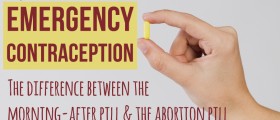

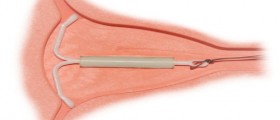
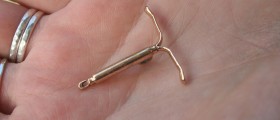
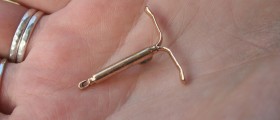






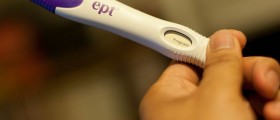
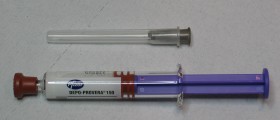

Your thoughts on this
Loading...